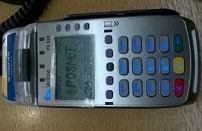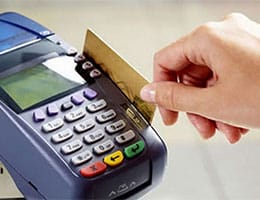 Posnet is the name of an Argentine company that offers electronic payment terminals to businesses . Since its popularization, the name began to be used as a common noun to refer to this type of device.
Posnet is the name of an Argentine company that offers electronic payment terminals to businesses . Since its popularization, the name began to be used as a common noun to refer to this type of device.
A posnet, therefore, is a dataphone : a device that allows a commercial establishment to charge its clients or users using a debit card or credit card . It is a device with connection via IP or telephone network that has a magnetic stripe reader, a keyboard, a printer and specific software for managing operations.
When someone wants to pay by card , the seller must use the posnet. Thus, you have to ask the customer for the card and place its magnetic stripe or chip in the corresponding reader. You also need to enter the amount to pay, which will be deducted from the buyer's bank account (in the case of a debit card) or added to their expenses (when paid with a credit card). Once the payment has been made, the posnet prints two copies of the ticket that acts as proof : the buyer must sign the original document and deliver it to the seller, keeping the copy.
Based on technological advances, the operation and benefits of the posnet changed. Currently, computers can establish connections through the Internet , telephone lines or cellular (mobile) telephone chips. There are, in this framework, fixed posnets and wireless posnets .
There are also dataphones that enable integration with billing. There is even equipment that makes it possible to incorporate points programs or recharge credit, for example.
Another innovation that has appeared in posnets in recent times is payment via NFC connection ( Near Field Communication ), a wireless technology that allows payment to be made simply by bringing the debit or credit card close to the dataphone. or by resting it on the reader, instead of having to insert it or pass it through the slot.
 Among the advantages of payment using NFC is greater convenience: a few seconds of contact between the card and the posnet are enough for the operation to be completed, especially if they do not require us to enter our security key . This last point is important, since depending on current regulations, amounts below a certain limit do not require such identity verification, and this speeds up small purchases quite a bit.
Among the advantages of payment using NFC is greater convenience: a few seconds of contact between the card and the posnet are enough for the operation to be completed, especially if they do not require us to enter our security key . This last point is important, since depending on current regulations, amounts below a certain limit do not require such identity verification, and this speeds up small purchases quite a bit.
If the posnet accepts payments with NFC, it also gives us advantages in terms of card conservation: since we do not have to insert them into narrow slots, their wear and tear is practically zero during payment. This represents a drastic change from the old systems, which involved considerable friction in each operation .
Before the invention of the posnet, payment had to be recorded manually with a mechanical device called a validator or, informally, a bacaladera . For the process to be carried out, it was necessary that the cardholder's data be embossed, since they were recorded using carbon paper.
At that time, the purchasing process was more cumbersome, because the seller had to require the buyer to provide an identification document, verify by hand that the card was not stolen, call the Authorization Center by phone if the amount was too high, and finally capture the paper all transaction data. The posnet meant the automation of all these steps and an increase in the security guarantee for both parties, offering greater agility that indirectly affected the cards becoming more popular.
